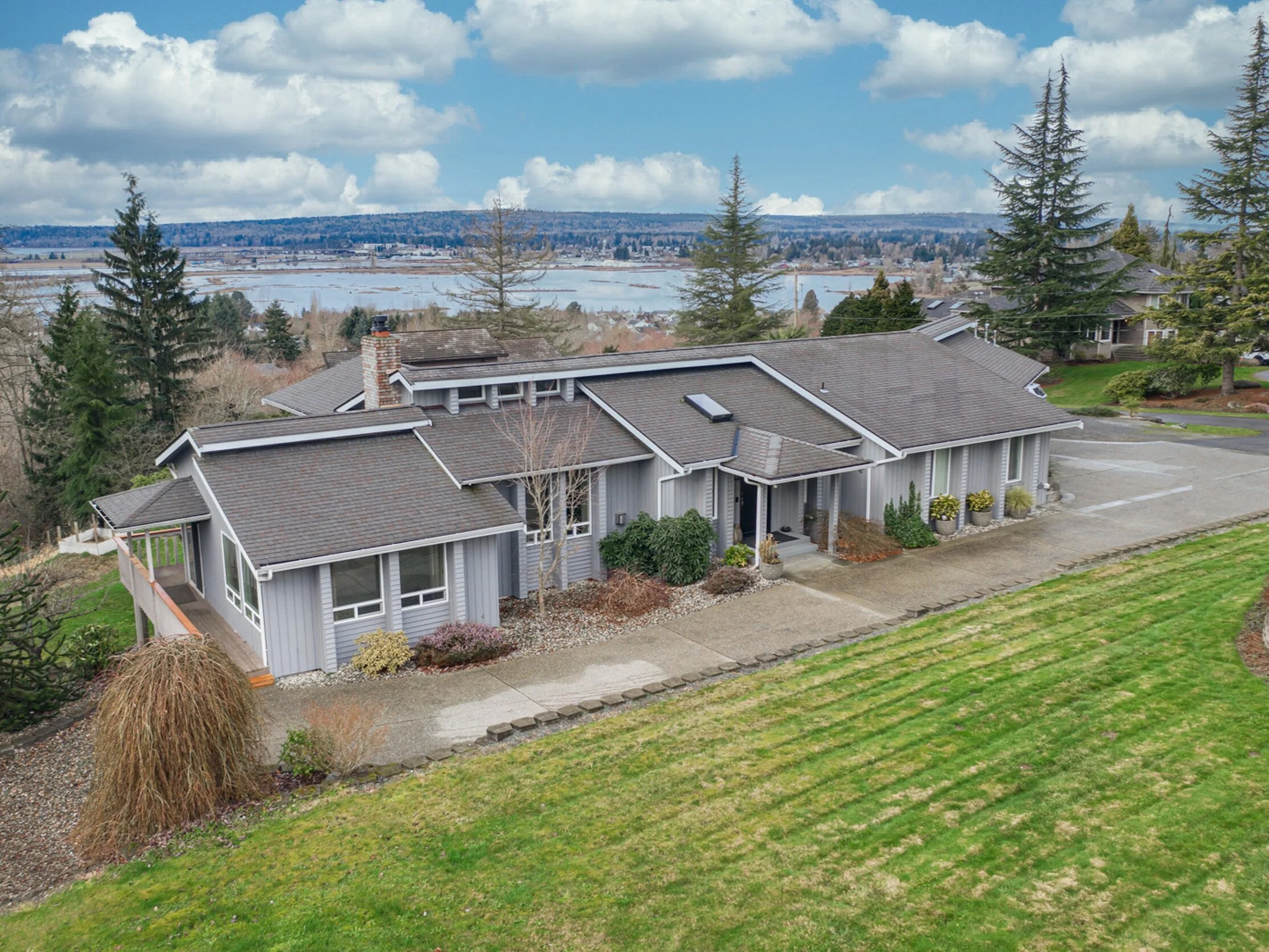Everett Archives: Japanese Gulch
Header image: Japanese Gulch settlement // Burke Museum
Today Japanese Gulch is known for its verdant ravines, which lead from the Mukilteo waterfront uphill to the Boeing plant in South Everett. Locals love to go to the gulch to walk their dogs, ride mountain bikes, or get lost in a quiet forested reverie.
Wildlife lovers can expect to see woodpeckers, deer, and herons from the trail system that winds through the hills. Hikers glimpse views of the Salish Sea and Hat, Whidbey, and Camano Islands.
But there’s more of a story in the gulch than meets the eye.
As you may suspect, Japanese Gulch has a history that was informed by Japanese Americans. These immigrants came to America in the early twentieth century to work at the Mukilteo Lumber Company as shingle weavers. They built homes in what became known to the locals as Japanese Gulch -- the wooded ravine in the east of the city.
Census data shows that many Japanese American men had moved to the gulch by the 1910s then were joined in the 1920s by women and children. Their reception in the town was hostile. White workers threatened to strike when Japanese American workers were first hired by the mills. Nevertheless, mill owners continued to hire workers from Japan, and the settlement at Japanese Gulch grew.
Despite racial tension, during the 1920s about half of the students at Mukilteo’s Rosehill Elementary school were of Japanese descent, and half were white. The Depression years of the 1930s saw the closing of the Mukilteo Lumber Company as the economy declined, and all of the residents of Japanese Gulch left their homes to look for work elsewhere, creating a ghost town that soon was torn down for salvaged wood.
The workers’ abandonment of the Mukilteo area may have saved some of their lives. While most white Mukilteo residents grew to live at peace with their Japanese American neighbors, there was sometimes racial aggression, as when people drove by the Japanese settlement under the cover of night and fired shots into Japanese Gulch. By the early 1940s, in the wake of the Pearl Harbor bombing, racial hatred against Japanese Americans had peaked and people of Japanese descent were rounded up and sent to internment camps for the duration of World War II. This is a sad footnote for the people who lived peacefully in Mukilteo for so many years and worked diligently at the mills.
1922 Rosehill School first grade picture // Burke Museum
I’ve posted photos of Japanese Gulch on online forums dedicated to local history. Local hikers have told me that as recently as the 1970s and 1980s they found remnants of the Japanese Gulch settlement in the forested canyons near Mukilteo: bottles, cans, and the crumbled outlines of house foundations.
A few artifacts from the Japanese Gulch settlement are kept today in the Burke Museum archives at the University of Washington. They include hand-tailored leather shoes. The Burke Museum archivists have written articles explaining how the residents of Japanese Gulch thrived in part by foraging in the local forest, fishing in Possession Sound, and traveling to Seattle’s International District to buy imported goods from Japanese American merchants. They also bought goods from the Crown company store (the Mukilteo Lumber Company changed its name to Crown Lumber in the 1920s). Company stores typically charged high prices for goods and required their workers to buy provisions with company-issued currency, or scrip. This was a ploy to keep workers indebted to the company through lines of credit.
Japanese Gulch also has one other distinction that’s worth noting. It’s home to the steepest railroad grade in the United States. Today, boxcars travel from Edgewater Beach up the rails to the Boeing aerospace plant.
To walk the trails of Japanese Gulch today is to feel strangely distant from the nearby modern city, to find yourself in quiet seclusion near to the urban seaside. But if you listen closely, you might hear the voices of former residents, talking in hushed tones among the shifting winds of the seaside canyon.
Thanks for reading! Don't forget to subscribe to our monthly newsletter to stay up to date with community news and real estate tips.
You can head back to the main Lamoureux Real Estate website here.




